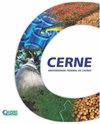硼和油处理木材的表面润湿性
IF 0.7
4区 农林科学
Q3 FORESTRY
引用次数: 3
摘要
背景:目前,人们对环保、高性价比防腐剂的需求不断增加,木材保护领域正在探索新的非传统防腐方法。植物油提高木材的尺寸稳定性、疏水性和平衡含水率,并利用其疏水性保护木材免受腐烂真菌的侵害。本研究的目的是研究热处理和油浸(事先或不事先用硼化合物处理)对苏格兰松(Pinus sylvestris L.)和山毛榉(Fagus orientalis L.)木材润湿特性的影响。用浓度分别为1%、2%和5%的硼酸、硼砂和农业用硼浸渍木材试件,然后用废油和葵花籽油在160℃下进行油热处理。润湿性的测定采用接触角法,采用固滴法。结果:经油处理的木材的水接触角增大,湿张力减小,木材被水浸湿的程度较对照组差。双重处理试样表面的液滴体积在初始液滴体积的基础上变化了5%左右。废油处理的防水效果最好。硼化合物的高负荷降低了接触角,因此木材吸水量增加。结论:硼预处理后试样的润湿性降低,证实疏水表面是由油形成的。润湿性是良好附着力、涂层和油漆的先决条件,而油热处理后产生的亲水表面可能会降低润湿性。本文章由计算机程序翻译,如有差异,请以英文原文为准。
Surface Wettability Of Boron And Oil-Treated Wood
Background: Nowadays, demands for more environmentally friendly and cost-effective preservatives are increasing, and new non-traditional procedures are being explored in wood protection field. Plant oils improve the dimensional stability, water repellency and equilibrium moisture content of wood, and protect wood against decay fungi by means of its hydrophobic properties. The aim of this study is to investigate the influence of heat treatment and oil impregnation with or without prior treatment with boron compounds on wetting characteristic of Scots pine (Pinus sylvestris L.) and beech (Fagus orientalis L.) wood. Wood specimens were impregnated with boric acid, borax and agricultural boron at concentrations of 1%, 2% and 5% followed by oil heat treated with waste and sunflower oil at 160ºC. Wettability was measured by contact angle with the sessile drop technique using water. Results: Water contact angles on oil treated specimens increased while wetting tension decreased, and the wood more poorly wetted by water compared to the controls. A change in the drop volume on the surface of double treated specimens was around 5% based on the initial drop volume. Waste oil treatment resulted in having the greatest water repellent efficiency. High loadings of boron compounds decreased the contact angle and therefore the quantity of water absorbed by the wood increased. Conclusion: Wettability was decreased in specimens pretreated with boron and this confirmed that the hydrophobic surface was created by oil. Wettability is a prerequisite for good adhesion, coating and painting and this feature may be reduced by the less hydrophilic surfaces created after oil heat treatment.
求助全文
通过发布文献求助,成功后即可免费获取论文全文。
去求助
来源期刊

Cerne
农林科学-林学
CiteScore
1.60
自引率
0.00%
发文量
2
审稿时长
6-12 weeks
期刊介绍:
Cerne is a journal edited by the Federal University of Lavras, Minas Gerais state, Brazil, which quarterly publishes original articles that represent relevant contribution to Forestry Science development (Forest ecology, Forest Management, Silviculture, Technology of Forest Products).
 求助内容:
求助内容: 应助结果提醒方式:
应助结果提醒方式:


